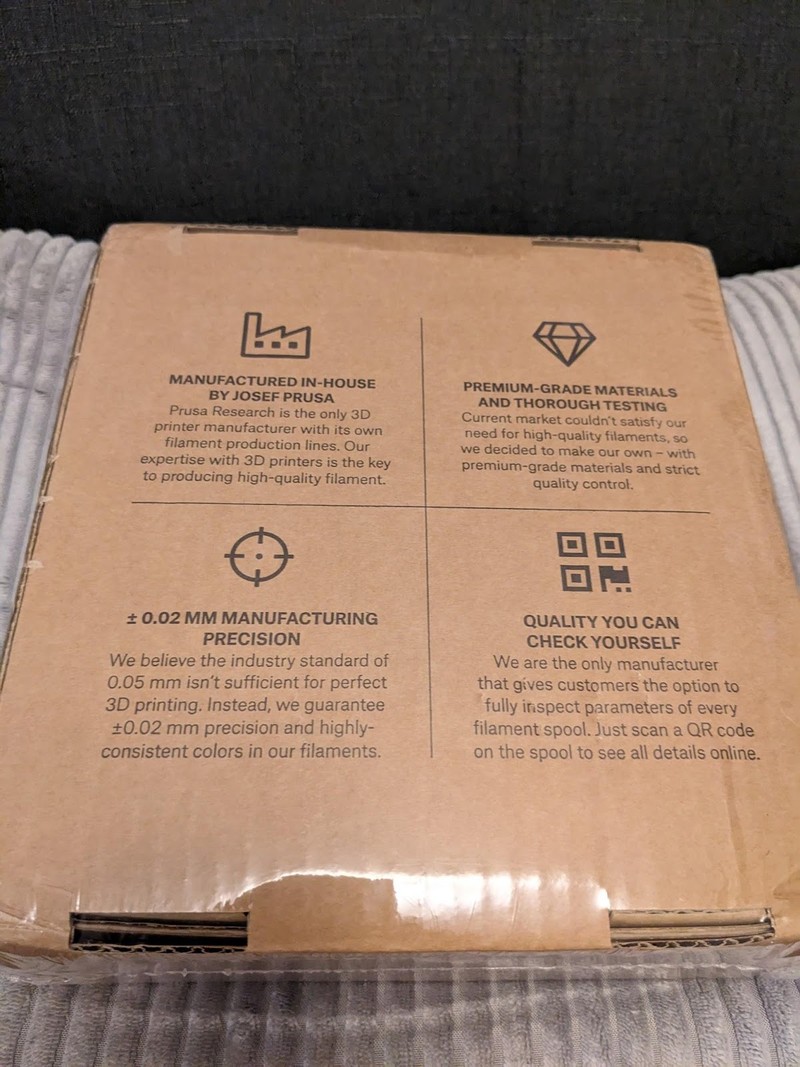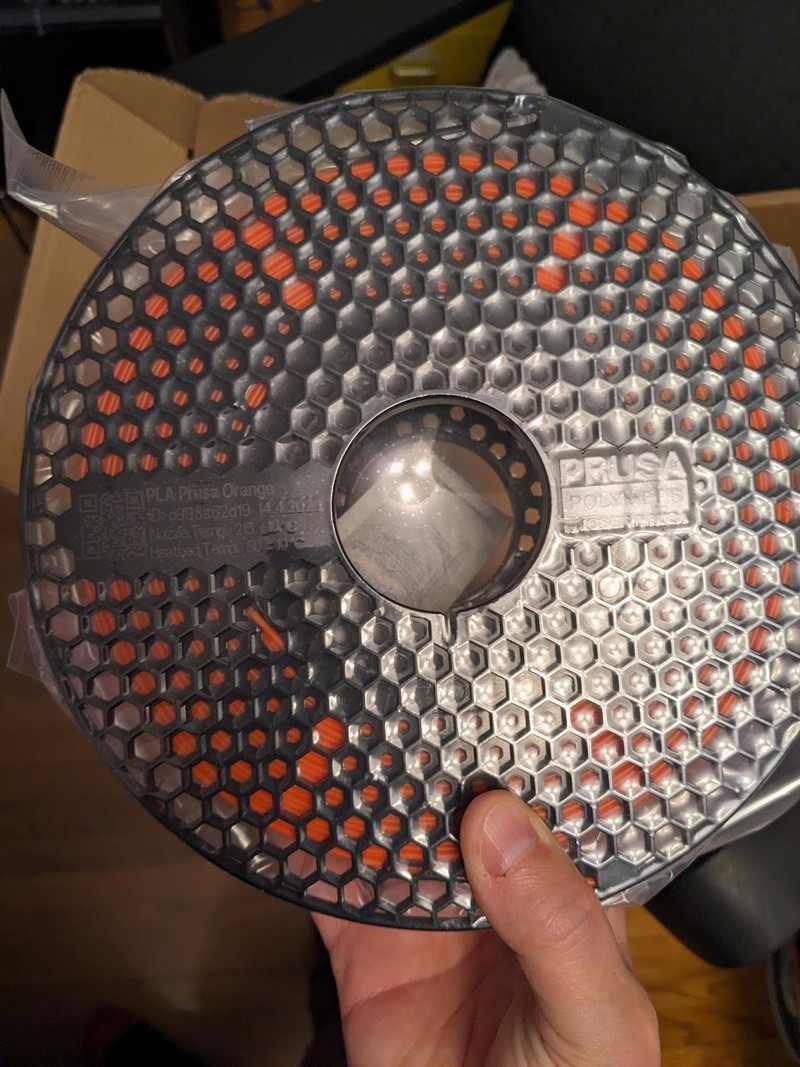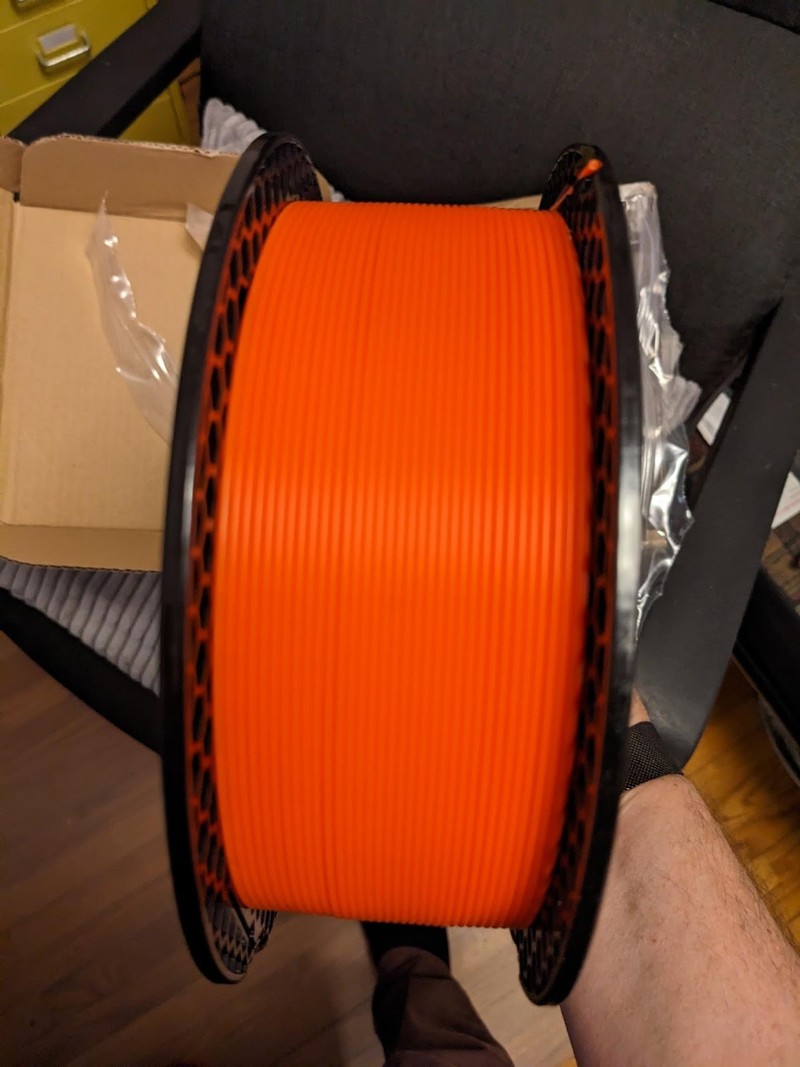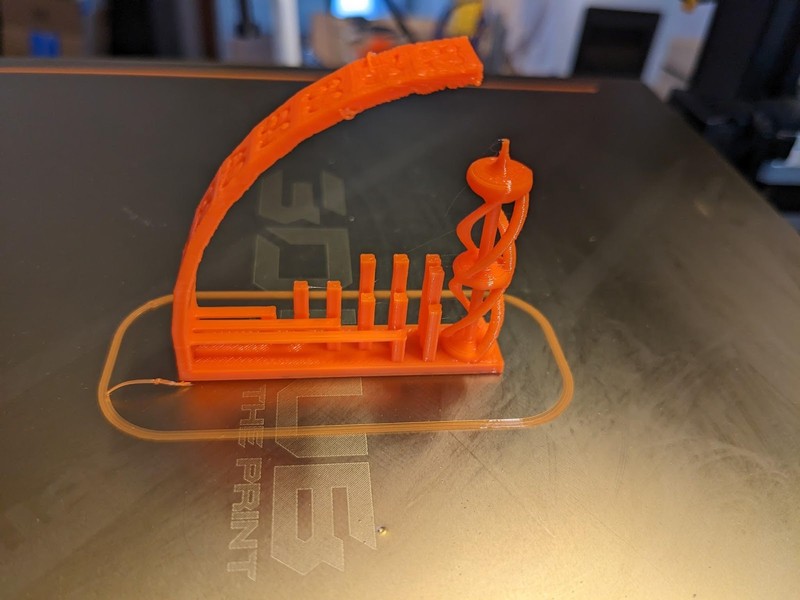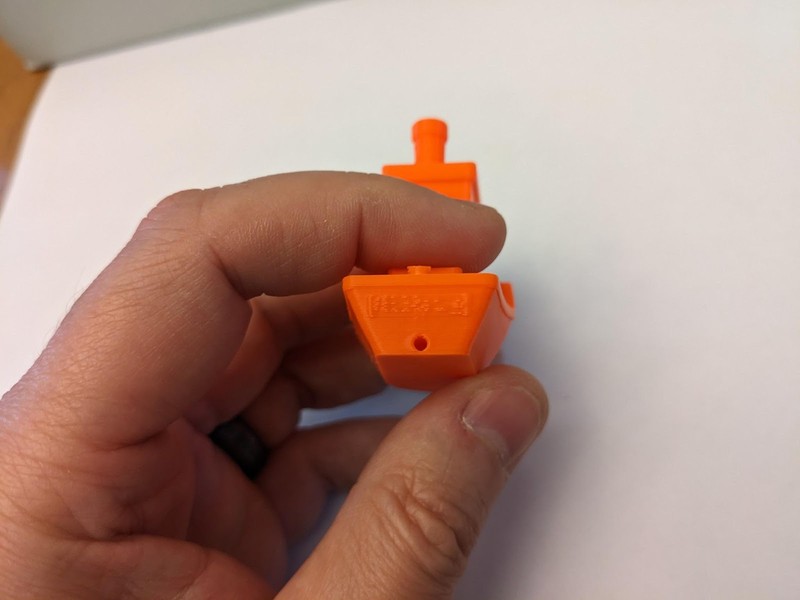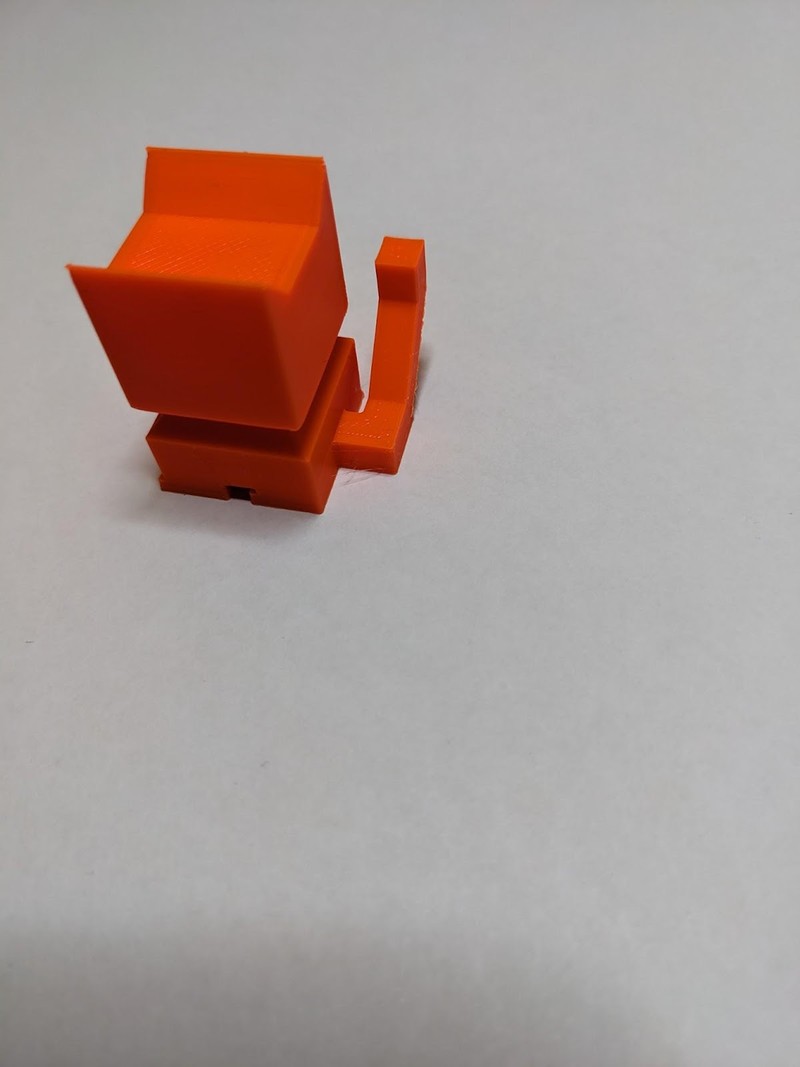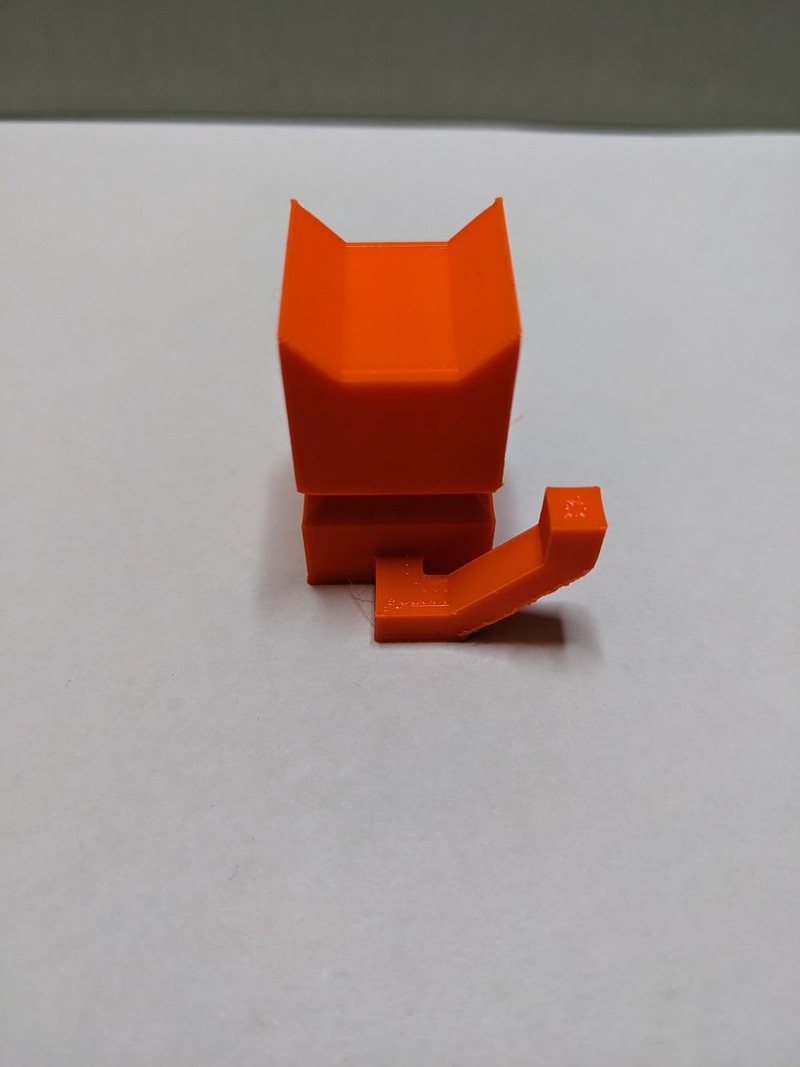Filament Report - Prusament PLA
Filament Report - Prusament PLA
General Experience

The Prusament PLA (view on prusa.com) impresses immediately with its packaging, which features abundant helpful information in a friendly tone. The filament itself is wound with precision, and the vacuum-sealed bag is notably tight. The spool’s design, complete with hexagonal holes and angled channels for securing the filament’s end, showcases innovation. Alongside the box’s side, one finds detailed specifications for the spool, including diameter variation, exact weight, and manufacturing date. Despite such promising beginnings, initial test prints revealed stringiness, though bed adhesion proved optimal, allowing prints to be securely attached yet easily removable once cooled.
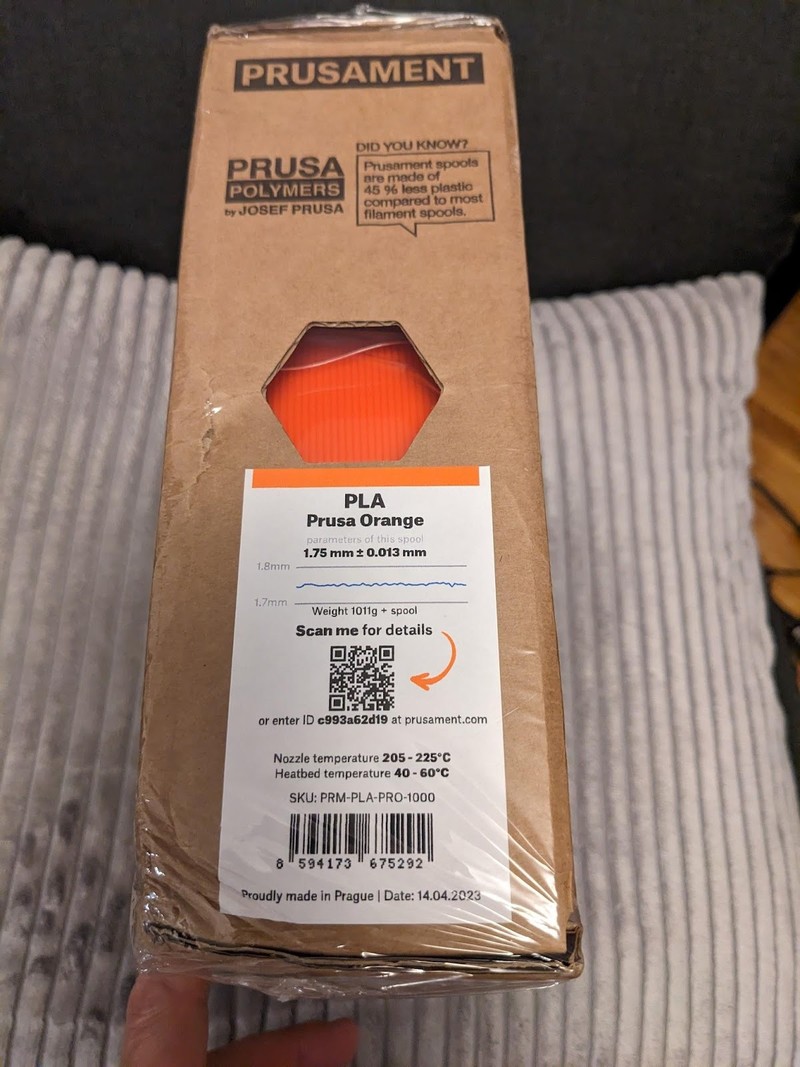
The spool comes with a QR code and an ID for accessing detailed information specific to the batch online. Although first impressions were nearly flawless, test prints initially presented with stringing, balanced by excellent bed adhesion, facilitating easy print removal after cooling.
Surface Finish/Appearance
Prusament PLA boasts the iconic orange color of Prusa’s printers, a bright and slightly fluorescent hue. The finish straddles the line between satin and glossy, offering a visually appealing look to the printed objects.
Settings
Temperature

Prusa Research advises printing within 210±10°C, a recommendation supported by the box’s indicated range of 205-225°C. Testing across 200-220°C, we observed consistent quality in text detail and layer lines, despite minor stringing at lower temperatures. Selecting 215°C minimized stringing while maintaining good bridging and detail, proving optimal amidst the range tested.
Retraction

A retraction test ranging from 1-6mm showed decreasing stringing with increased retraction distance, stabilizing at 5mm without further improvement beyond this point, indicating an optimal retraction setting.
Fan
With the Ender 3 V2 Neo’s limited cooling capacity in mind, we adhered to Cura’s default fan settings. These conditions proved sufficient, avoiding the excessive stringing that might result from inadequate cooling in detailed parts.
Test Prints
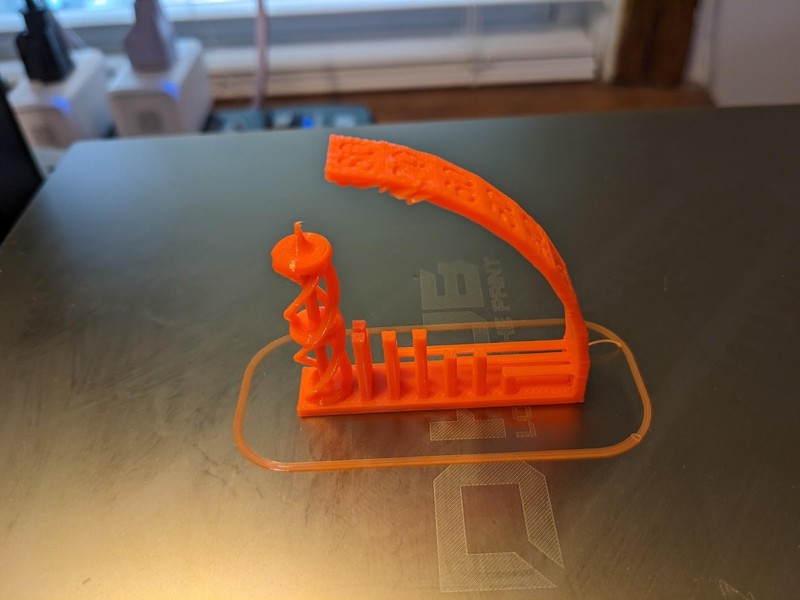
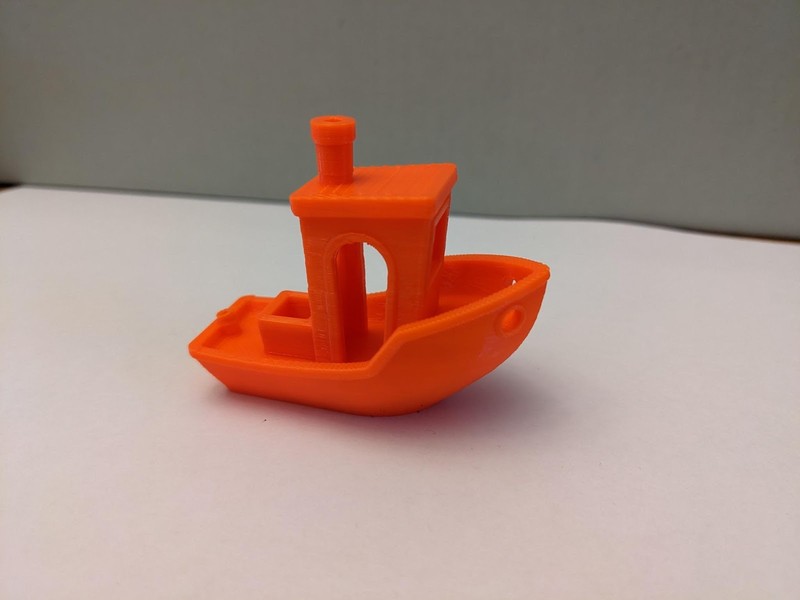

The Cali Cat print emerged nearly perfect, with detailed facial features and minimal stringing around the tail. Notably, there was no stringing between the ears, indicating that at the optimal temperature of 215°C, this filament exhibits minimal stringiness, making it an ideal choice for prints requiring high detail without post-processing.


Click here to check prices for Prusament PLA Meta on Prusa.com.
